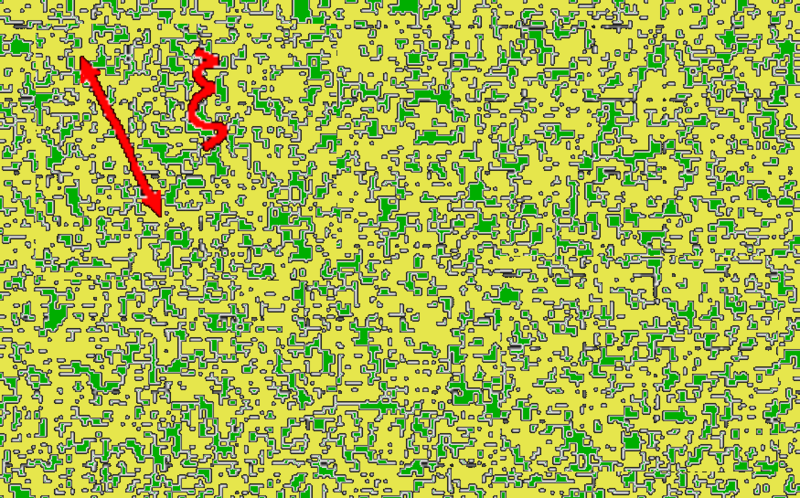Critical phenomena and fluctuations
|
Researchers: |
Dr. habil. Anna Maciolek (contact person) Dr. Piotr Nowakowski Dr. Sutapa Roy Dr. Nima Farahmand Bafi Dr. Oleg Vasilyev
|
 |
|
|
Collaborators: |
Prof. D. Abraham |
Upon approaching the critical point of continuous phase transitions the correlation length diverges and thus renders, to a large extent, microscopic details irrelevant. This leads to universal power laws and scaling functions for static and dynamic properties. Such critical states of matter are highly correlated and particularly sensitive to external perturbations. As a consequence, the influence of external confinements or defects reach deep into the bulk structure. Theoretical techniques such as field-theoretical renormalization group theories, conformal field theories, transfer matrix techniques, Monte Carlo simulations, scaling theories etc. can capture the various aspects of critical phenomena. A wide range of experimental techniques has emerged which allows one to test these theoretical predictions quantitatively. Scattering of X-rays and neutrons yields a detailed picture of local properties in critical inhomogeneous systems. Examples of such systems are thin films of binary alloys near their continuous order-disorder transitions, magnetism near surfaces and in thin films close to Curie or Néel temperatures, and concentration profiles of binary liquid mixtures at container walls or fluid interfaces close to their demixing transition. Temperature-dependent X-ray diffraction data of the local critical behavior of sublattice order in thin FeCo films have recently confirmed the scaling predictions for critical phenomena at surfaces which are characterized by surface fields giving rise to strong-field and weak-field critical adsorption.
Inspired by the rich morphology of wetting films covering laterally structured substrates the scientific question arises what kind of structural properties appear in such fluids if their thermodynamic state approaches a critical point. Accordingly, the problem of critical adsorption on laterally structured substrates is studied by fieldtheoretical techniques. As paradigmatic cases the order parameter profiles and excess quantities of fluids near criticality are investigated in a single wedge and at an edge of variable opening angle as well as on a planar substrate with a chemical step. In the later case the two halves of the substrate have opposite preferences for the two components of a binary liquid mixture near its demixing transition so that the fluid is exposed to frustrating surface field near the chemical step. Universal scaling laws describe how this frustration heals upon approaching the bulk of the fluid. Both studies can be extended to the case of periodically repeated lateral structures.
If mesoscopic particles are immersed into a fluid close to its critical point, their presence changes the fluctuation spectrum such that the particles exert the fluctuation-induced so-called thermodynamic Casimir forces onto each other, which can lead even to flocculation of the particles. Based on previous calculations of the Casimir forces between parallel plates and between spherical particles and a wall, the fieldtheoretical analysis has been extended to the calculation of the effective interaction between pairs of spherical particles as function of both the reduced temperature and the chemical potential of the fluid. This provides the basis for specific predictions concerning the phase behavior of colloidal particles in a near-critical solvent. The theoretical predictions for the effects of the Casimir forces on thin wetting films of He4 near the superfluid transition have been confirmed quantitatively by high resolution capacity measurements. Very recently there have been carried out new experiments which analyze the Casimir forces in thin films of He4-He3 mixtures close to the tricritical point. This probes a new universality class and more complex boundary conditions which involve the interplay between concentration fluctuations and the superfluid order parameter. The corresponding enriched model calculations are under investigation as well as the analysis of the interplay between the background dispersion forces and the critical Casimir forces.
